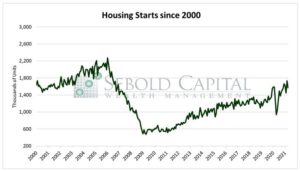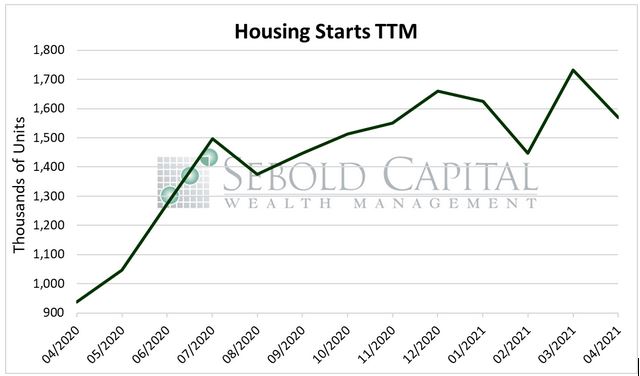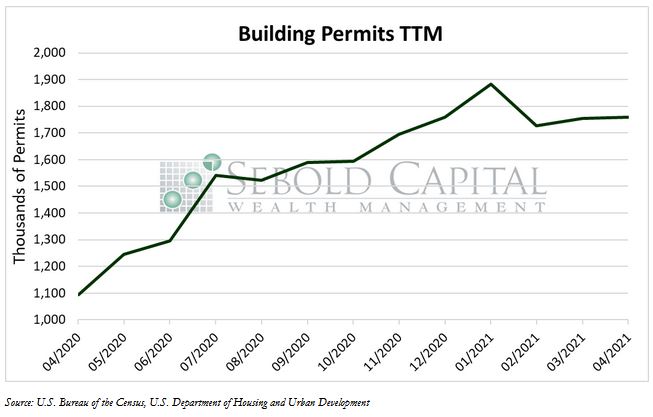 U.S. Building Permits refer to the approvals given by local jurisdictions prior to the construction of new real estate developments. Housing starts track the number of new residential construction projects that have begun over a month. Both of these indicators have implications for demand in construction spending and jobs, consumer wages, and complementary sectors such as durable household item sales. Building Permits and Housing Starts are both considered to be leading economic indicators.
U.S. Building Permits refer to the approvals given by local jurisdictions prior to the construction of new real estate developments. Housing starts track the number of new residential construction projects that have begun over a month. Both of these indicators have implications for demand in construction spending and jobs, consumer wages, and complementary sectors such as durable household item sales. Building Permits and Housing Starts are both considered to be leading economic indicators.
In April, building permits remained nearly unchanged, only rising by 0.3% from the previous month to 1.76 million. Housing starts declined by 9.5% to 1.57 million after surging by 19.7% in March. Despite the apparent slowdown in construction, building permits have increased by 60.9% and housing starts have surged by 67.3% over the past year, and building permits sit well above pre-pandemic levels. Broken down by census region, housing starts declined in the South and Midwest, but they increased in the West and the Northeast. Building permits, however, fell in the West and the Midwest and rose in the South and Northeast.
Construction stalled last month as rising material costs and supply chain constraints continue to pose a challenge for builders. For instance, the price of lumber—a material that is essential for construction—has surged over 85% year-to-date as the industry has struggled to keep up with demand. The ongoing shortage of workers likewise poses another challenge for the construction industry. Due to the pandemic-related shutdowns and restrictions, homebuilders were unable to operate for most of the spring and a good portion of the summer—which are peak homebuilding seasons. As a result, the existing supply of homes could not be expanded enough to meet the rising demand stemming from record-low mortgage rates and shifting consumer needs. As homebuilders rushed to catch up, they helped created the aforementioned shortages, making it more difficult to build. Prices, both for homes and the materials used to build them, will continue to rise which will eventually curb demand and allow supply to finally catch up.


May 18, 2021
